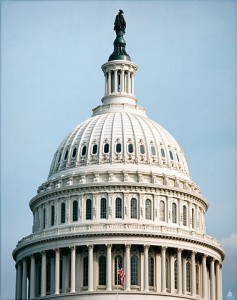APEX Preview: How Washington Views Bells, Whistles and Horns
By Loraine DeBonis, Editor-in-Chief
 Prepaid may be a more expensive business to enter—as compliance costs increase and margins thin—but that doesn’t mean the entrepreneurialism and innovation that birthed the industry are finished. A panel at All Payments Expo in Las Vegas next week will explore what it takes to enter and succeed in the market, which companies will be leading innovation and how to innovate amid unprecedented regulatory scrutiny and oversight.
Prepaid may be a more expensive business to enter—as compliance costs increase and margins thin—but that doesn’t mean the entrepreneurialism and innovation that birthed the industry are finished. A panel at All Payments Expo in Las Vegas next week will explore what it takes to enter and succeed in the market, which companies will be leading innovation and how to innovate amid unprecedented regulatory scrutiny and oversight.
“We’re not feeling pressure from a creativity standpoint, but we are feeling pressure from the investment we’re having to put into compliance,” says Mark Tepper, president of 1to1 Card, a program manager that operates incentive, loyalty, promotions, payroll and GPR programs. Tepper, a prepaid veteran who has worked in the industry for more than 16 years, says the increased cost of doing business has made banks and 1to1 more selective in the programs they support. “We’re not interested in celebrity programs, for example. And, you’ll still have people who come in thinking they’re going to sell a million cards in year one,” he says. What 1to1 is looking for are programs with backers that understand their target markets and have a solid plan for distribution, Tepper explains.
NPBCA executive vice president and general counsel Brad Fauss agrees that issuers are being more selective compared with the early days of prepaid. “In the old days, issuing banks would seek out innovative program ideas and then quickly partner with the program managers generating those ideas. Today, issuing banks want to review your business plan, learn how you’re going to differentiate yourself in a crowded market and make sure you have the capital necessary to execute on your plan, especially if market adoption takes longer than expected,” he says. “Issuers want to ensure that each new program manager is prepared for the level of compliance and regulatory oversight necessary for the type of products being offered.”
Tepper says there’s still a lot of interest in prepaid from companies looking to gain efficiencies or improve loyalty, but it’s not an easy business to enter as a program manager. Consolidation in the industry has been most prevalent on the program manager side so far. Green Dot closed acquisitions for two program managers (AchieveCard and AccountNow) in Q4 2014 and Q1 2015.
“The reality is that margins are very small, and we’re constantly adjusting to meet the compliance requirements of the banks, which can add to our costs. But, prepaid is what we do and we continue to grow every year,” Tepper continues. He attributes 1to1’s longevity, in part, to being a good bank partner. As issuers face increasing regulatory scrutiny, particularly around third-party oversight, program managers must show they’re being proactive about compliance.
More Outreach/Education
“To some degree what we’re facing on the regulatory front is a product of our own success,” adds Doug Bower, executive director, NBPCA. “We’ve grown so rapidly in a very short period of time that regulators are trying to get their hands around it.” Bower believes the industry must continue to share its passionate vision of providing cost-effective prepaid products that serve a variety of needs and demographics, and helping policymakers understand nuances across verticals.
Fauss echoes the idea of more outreach and believes the CFPB’s NPRM on prepaid provides an opportunity for the industry to speak up about how the agency’s proposed rules could have unintended consequences for specific products and the consumers and businesses that use them. “As you can imagine with an 870-page proposed rule on a complex financial product, there will be unintended consequences, but they can easily be fixed in the final rule with the industry and the bureau working closely together through the notice and comment process.”
Features of the Future
Although credit features continue to raise red flags for regulators and legislators, Bower is uncertain which value-added “bells and whistles” might get a stamp of approval from Washington. That said, the Fed released a report in January calling for faster, more efficient payments, so there is some appetite for payments innovation.
Bower expects the prepaid industry will go through a period of less rapid innovation compared with the last five years, but he’s confident it won’t just be the big, established players that can afford to try new features or strategies. “The traditional banking model is going to be very different in 10 to 15 years than it is today,” he predicts. “We’ll continue to see established players innovating to maintain and gain market share, but we’ll also see new entrants. There still are opportunities for people to be innovative through technology.”
To continue this discussion and much more on the future of prepaid and emerging payments, register for the All Payments Expo using the Paybefore discount code XU2848PBF when you register online.
See related stories:












































